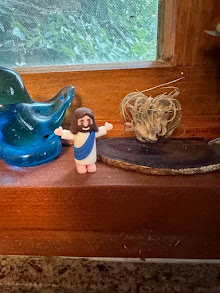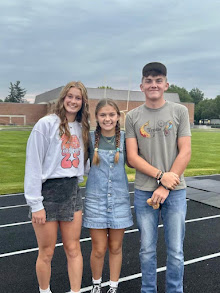This is what happens in April.
Saturday evening. I am watering wilted fuchsia baskets in the big house when Blake calls. He has checked the reservoir for possibly the 50th time this week and likely the tenth time this warm day with wind gusts up to forty mph from the south. "How're you doing?" he asks. This is a shorthand I understand.
"Are we done? I'm watering sad fuchsias"
"Will they die? If you water them now, it will be all salt water.."
We have a deep well, but it is so high in sodium, we have to mix it with our sweet well.
I lift a couple of baskets to check...."No, they'll make it til tomorrow."
I shut off the hydrants and walk up the hill to the office. Lee and Ryan, who have also been at the business end of a garden hose, are ahead of me. We've done what can be accomplished with the resources we have. The rest will just have to wait, just as we look to the skies, our phones, and the ten o'clock meteorologist to gauge our chances for relief. When there's no more you can do, you just go home.
At least it is Saturday night. I've promised to grill some burgers for my husband. This simple meal will include a head of cauliflower chopped and the seasoned burgers sprinkled with some tomato basil feta that appealed to me at the HyVee and hearty chunks of last summer's lime pickles. Blake will not complain.
Chopping the head of cauliflower reminds me of our trip to California's Salinas Valley last summer. The Salinas Valley is a potpourri of food production, a crazy quilt of edibles in all stages from transplant to harvest, leafy greens to artichokes, all possible through the judicious and calibrated use of irrigation. After two years of shortened field crops and the constant worry and expense of providing water to our greenhouse plants, I know what it is to deal with scarcity. We don't have a spigot to turn on when we need it.
But there is no agency turning that spigot off either. We scoop up some dip with our crunchy cauliflower only as long as there is water for those farms in California, only as long as those farms and that produce have sufficient value to society. If, perchance, some California critter is declared scarce, the vast and productive farms return to the dust from whence they emerged.
The greenhouses are home to creatures above ground and below. We fight the ages old battles with the rodents human history has pronounced a scourge; we stumble to avoid squishing harmless toads; we clean sparrow nests and wasp nests from our machinery and chimneys. But there are marvels too. The first butterflies of the season, the red admirals, find a flowering oasis; hummingbirds in transit buzz through for a week or so.
The locals make their best nests cheek by jowl with the working parts of the business. I enjoy the robins of spring, the swallows of summer that scoop snacks off the greenhouse plastic like it was a glassy ocean, the killdeer that ply their wiles in the fall as I pace the watering route in the mum patch. The line between habitat and human is large and blurred and is home to life abundant and sometimes unexpected.
There are two ways to solve the water shortage at Hurst Greenery. One is to put the flowers on the trucks and send them to someone else to plant and care for; to change this:
into this:
And the other is Nature's way:
This is one part of April....
....and this is another...
Mud makes the grass grow....


























No comments:
Post a Comment